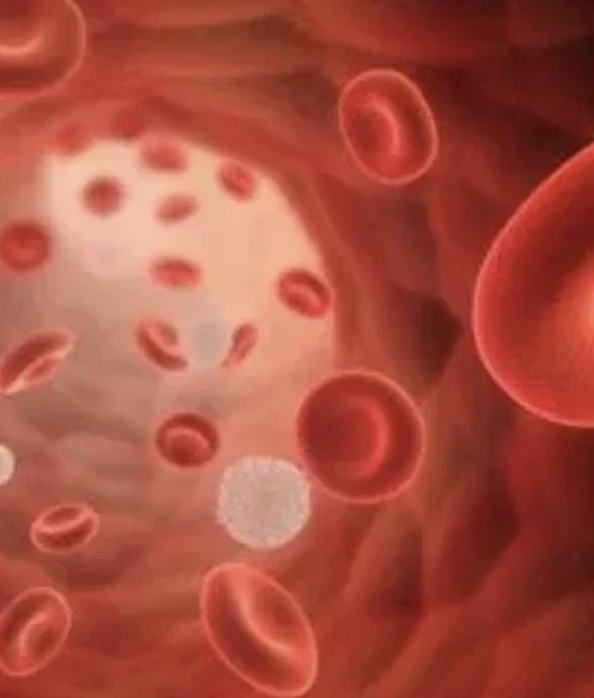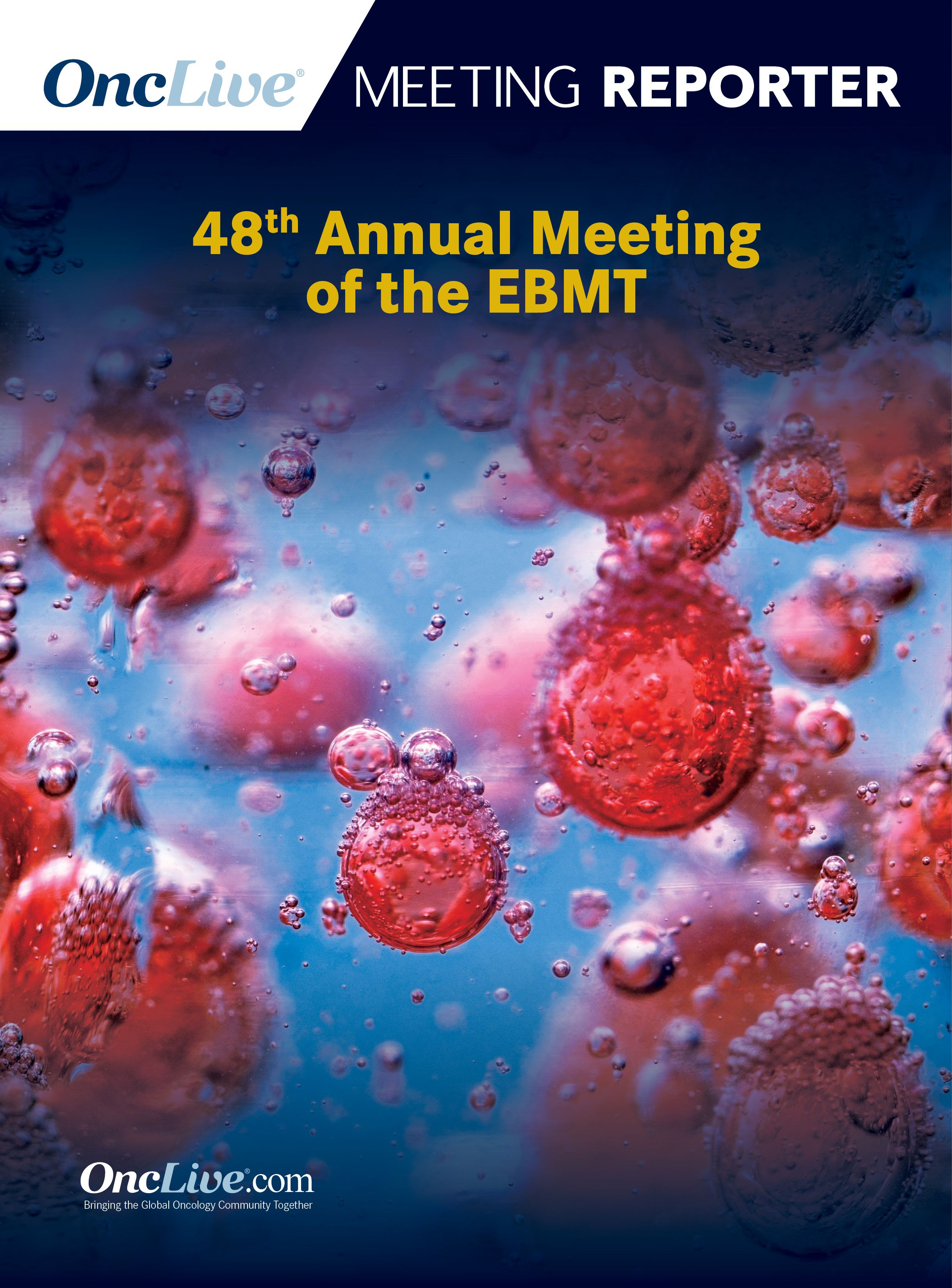Publication
Article
Pegcetacoplan Improves Efficacy in Complement Inhibitor–Naïve Paroxysmal Nocturnal Hemoglobinuria
Author(s):
Pegcetacoplan treatment was associated with hemoglobin stabilization and normalization, as well as a superior change from baseline in hemoglobin levels, which showed a meaningful correction of anemia, in patients with complement inhibitor–naïve paroxysmal nocturnal hemoglobinuria.

Pegcetacoplan (Empaveli) treatment was associated with hemoglobin stabilization and normalization, as well as a superior change from baseline in hemoglobin levels, which showed a meaningful correction of anemia, in patients with complement inhibitor–naïve paroxysmal nocturnal hemoglobinuria (PNH), according to results of the phase 3 PRINCE trial (NCT04085601). The findings were presented during the EBMT 48th Annual Meeting.
Data showed that the avoidance of greater than 1 g/dL decrease from baseline was 85.7% with pegcetacoplan vs 0% with the control arm (P <.0001), and hemoglobin levels that were at least gender-specific lower limit of normal (LLN) were 45.7% with pegcetacoplan and 0% with the control group (P = .0010). There was a 0.4% change from baseline to week 26 in hemoglobin levels in the pegcetacoplan arm vs 0.8% in the control arm (P = .0019).
Additionally, pegcetacoplan was superior to the control arm in change from baseline in lactate dehydrogenase (LDH) levels at week 26 at -1870.5 U/L vs -400.1, respectively (P <.0001). Pegcetacoplan also led to greater improvements in LDH normalization in the absence of transfusions at 65.7% compared with 0%, respectively (P <.0001).
“Patients with PNH that were naïve to complement inhibitor treatment displayed meaningful hematologic and clinical improvements through 26 weeks of pegcetacoplan treatment, as demonstrated by improved hemoglobin levels, lactate dehydrogenase levels, and transfusion avoidance, and improvements in quality of life,” lead study author Andrija Boganovic, MD, of the Clinic of Hematology, University Clinical Center of Serbia and Faculty of Medicine, University of Belgrade in Belgrade, Serbia, said in a virtual presentation during the meeting. “These results emphasize the potential of pegcetacoplan to provide disease control for adults with PNH that are naïve to complement inhibitor therapy.”
PNH is a rare and severe blood disorder in which destruction of red blood cells causes thrombosis and leads to organ damage and potentially premature death. Pegcetacoplan is a targeted C3 inhibitor that is indicated for adult patients with PNH who remain anemic, despite C5 inhibition.
In the phase 3 PRINCE study, investigators screened 53 complement inhibitor–naïve patients aged 18 years or older with PNH who were then randomized 2:1 to receive pegcetacoplan at 1080 mg subcutaneously twice weekly (n = 35) or a control group of no complement inhibitors (n = 18). If patients’ hemaglobin levels decreased by 2 or more g/dL from baseline, they were permitted to cross over to pegcetacoplan (n = 11).
Patients were stratified by red blood cell transfusion within the 1 year prior to screening (<4 vs ≥4).
To be eligible for enrollment, patients could not have received a complement inhibitor within 3 months prior to screening, must have had hemoglobin levels below LLN (males, ≤13.6 g/dL; females, ≤12.0 g/dL), and LDH levels at least 1.5 times the upper limit of normal ([ULN]; 1.5 times ULN; ≥339 U/L).
Coprimary end points were hemoglobin stabilization and change from baseline in LDH levels at week 26. Secondary outcome measures included change from baseline in hemoglobin levels at week 26, transfusion avoidance, and incidence and severity of adverse events (AEs) through week 26.
The primary reasons for patient withdrawal on study (n = 3) were due to death (n = 1 on each arm but were unrelated to treatment) and lost to follow-up (n = 1 on pegcetacoplan).
Further findings showed that pegcetacoplan also demonstrated statistical superiority in transfusion avoidance at 91.4% compared with 5.6% for the control arm (P <.0001), indicating significant alleviation in transfusion burden. Also, patients on pegcetacoplan were transfused with 0.6 median units through week 26 compared with the median 3.3 units in the control group (P <.0001).
Investigators also conducted an analysis of composite endpoints of transfusion requirements and hemoglobin drop was performed “to overcome possible bias of patients in the control group escaping prior to receiving transfusion,” Bogdanovic noted. However, 88.6% and 9% of pegcetacoplan- and control-treated patients, respectively, met none of the criteria.
Patients treated with pegcetacoplan achieved clinically meaningful improvements in FACIT-Fatigue scores compared with the control group through weeks 4 to 26 that were found to be consistent with improved hematologic parameters and transfusion avoidance (P = .0610). This was not found to be statistically significant, which Bogdanovic said could be due to the small sample size and high variability in the control group. Also, the patients in the pegcetacoplan group reached the normal and healthy adult score for the FACIT-Fatigue scale.
Regarding safety, most AEs on the pegcetacoplan arm were found to be mild (34.8%) or moderate (28.3%) in severity, with 8.7% total AEs with pegcetacoplan defined as severe. There were no serious AEs related to treatment, and no treatment-related AEs led to discontinuation of pegcetacoplan or study withdrawal.
No cases of acute hemolysis were seen in either arm through week 26. The most common treatment-emergent AEs in the pegcetacoplan and control arms were injection site rejection (30.4% vs 0%, respectively), hypokalemia (13.0% vs 11.1%), dizziness (10.9% vs 0%), and fever (8.7% vs 0%).
The safety findings suggest a favorable risk-benefit profile with pegcetacoplan in this patient population, Bogdanovic concluded.
Reference
- Bogdanovic A, Wong RS, Navarro JR, et al. Efficacy and safety of pegcetacoplan treatment in complement-inhibitor naïve patients with paroxysmal nocturnal haemoglobinuria: results from the phase 3 PRINCE study. Presented at: EBMT 48th Annual Meeting; March 19-23, 2022; virtual. Abstract OS15-02.










